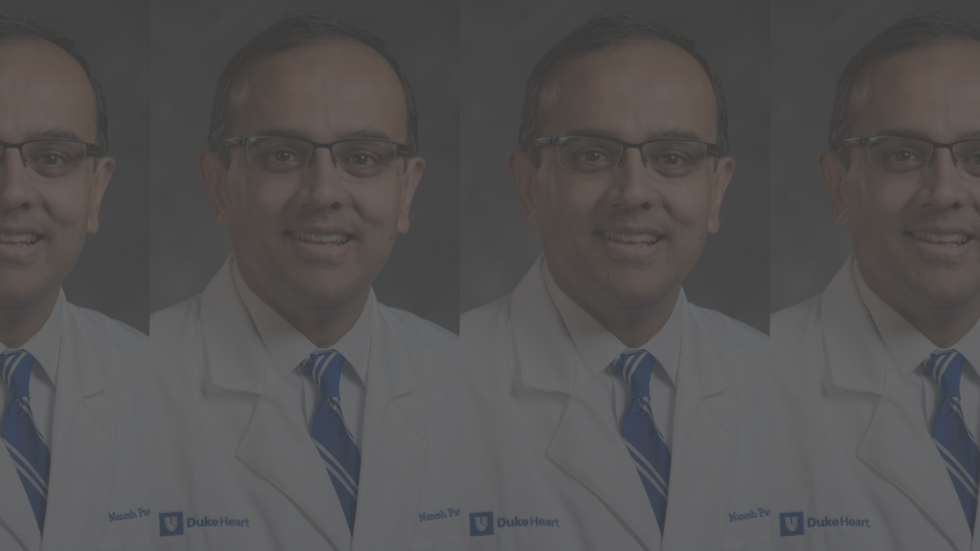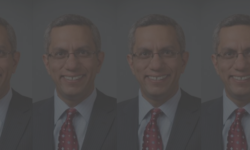
When Duke University School of Medicine Chief of Cardiology and Clinical Pharmacology Manesh Patel took interest in medicine, he wanted to apply science to people. Then, he took interest in internal medicine and its subspecialties, believing it was the strongest way to “think about all aspects of the patient.”
Finally, Patel took interest in hospital administration and assumed his current role as the Chief of Cardiology and Clinical Pharmacology, where he oversees over 90 physicians, 40 cardiology fellows and 3 hospitals.
“I wanted to build systems and work with the next generation to do healthcare better,” Patel said.
Undergraduate, medical and residency years
“College is about exploring different ideas, getting exposed to just balancing your own life, being out on a college campus, independence, but then also just different kinds of coursework or ideas,” Patel noted.
While Patel was at Vanderbilt University for his undergraduate studies, he explored the different opportunities that his college afforded him, but he eventually took interest in the biological sciences. Specifically, he enrolled in a molecular biology course that piqued his interest in both genetics and the body’s physiological processes.
From there, he realized that medical school would be his career path of choice. Patel worked in a microbiology laboratory at Vanderbilt, and he began taking the required pre-medical courses, such as chemistry and human physiology — a course he particularly enjoyed.
“I thought it was amazing, because it put together [the] physics, the chemistry, the biology, to say how does [that] physiologically work in somebody’s body,” Patel added.
When Patel was ultimately accepted into Emory University School of Medicine in Atlanta, Georgia, he noted that he was, first and foremost, very excited to have gotten in.
“It’s only gotten harder — college and medical school,” Patel added. “So I was excited to get into med school and then excited to get into med school at Emory, just because I’d grown up in Georgia and it was a little closer to home.”
When Patel was at Emory, he greatly enjoyed the field of cardiology, noting that he appreciated specialties that had a greater degree of patient focus. At Emory, students were presented with a patient case, labs and physical findings, and they would have to figure out the diagnosis, how to elicit it on an exam, and the ultimate treatment regimen.
“Another field I was really interested in was neurology, or neuroscience, or neurosurgery,” Patel added. “Because you could see someone, you could ask them questions, you could examine them, and you could figure out where the problem was.”
Patel spent two years of didactic training — the lecture-based part of medical school curriculum that provides a foundation for the basic sciences and medical rehabilitation. He also noted that training at Grady Memorial Hospital — the only Level I trauma center in Atlanta — was a big part of their education.
At Grady, he noted that the large volume of stroke and heart problems allowed him to find strengths in conducting neurologic physical exams, as well as any interventions that he felt like he could “figure things out.”
Patel also enjoyed Emory’s focus on case-based learning, rather than lecture-based didactics. On a given day, a group of medical students would come together and their instructors would present a case — for example, a case of vitamin B12 deficiency or anemia-induced neuropathy. Then, students would head to the library, mull over their case and come back to present their findings and diagnoses.
“I found that way of education really stuck in my head,” Patel added.
Though Patel hoped to conduct surgical procedures but also talk to patients and try to diagnose them during physical exams, it seemed like medicine had a wider range of opportunities than surgical specialties at the time. By the time he reached his residency years at Duke University School of Medicine, it was time for him to specialize beyond internal medicine, which he was doing at the time.
Ultimately, Patel chose cardiology — he took interest in the various clinical trials, as well as interventional cardiology, which included minimally invasive procedures.
“I just found the immediate gratification of doing something when someone’s having a heart attack, opening an artery, and stopping the heart attack,” Patel added. “Pretty powerful, right?”
As a fellow at Duke Clinical Research Institute, Patel learned how to read a cardiac MRI — involving use of a magnetic field and radiofrequency waves to create detailed pictures of the heart and arteries. He conducted imaging research and helped set up the Cath Lab, which he directed for six years.
“I realized that we hadn’t really studied what’s the best way to take pictures of the heart,” Patel said. “What drugs should we be giving them? How do we open the arteries? Which artery?”
A passion for patient-centered care
Patel noted that one of his favorite parts of working in the medical field has been using science to improve people’s lives. Medicine, he added, has afforded him the opportunity to wake up excited in the morning to go to his job.
“If you’re blessed to be able to take care of your basic needs, most of the time what you want to do is make sure others do better,” Patel said. “And it’s pretty cool when you can do that.”
Patel added that he does not have a single, most memorable moment in his career; rather, he has an accumulation of smaller moments that have compelled him to reflect on his blessings. Specifically, he noted the satisfaction of his student fellows successfully improving the outcome of a patient by performing a coronary angiography.
“That immediate sense of accomplishment that you have in training them or they have an accomplishment is really powerful,” Patel said. “Because you know there’s gonna be many times in their life they go do that well.”
Other gratifying moments stem from Patel’s long-term relationships with patients, in both the critical care unit and the clinic. When spending time with patients and their families and being there during their better and worse times, Patel noted that he feels extremely valued by them.
“What I love about clinic and patients is that you build a relationship with them, and they get to know you … there are lots of really deeply effective patient stories, many where people get better when they’re really sick,” Patel added. “That makes you feel like you played a role.”
Finally, presenting the results of his clinical trials — results that showcase a new therapy that could change the practice of cardiovascular medicine — in front of crowds of 5000 people is both nerve-wracking and a blessing.
“When I talk about the profession of medicine, I often say it’s the privilege that we have to take care of patients and touch them and talk to them and learn from them,” Patel said. “So that privilege is still a unique privilege in the world that only medical professions and a few other professions can do.”
Outside of the field of cardiology
Outside of his main role at Duke, Patel was previously the Chair of the American Heart Association (AHA) Scientific Sessions, a large meeting held in November for the entirety of the organization. He worked with “world-class” AHA people around the world in an effort to develop the program and host abstract presentations.
Additionally, he works with a non-profit organization called the Foundation to Advance Vascular Cures. Their aim is to advance patient-centered research, empower people in improving their vascular health and bring together collaborations with organizations around the nation.
Another important role Patel has outside of his medical career is his duty as both a husband and a father. The balance is oftentimes difficult, with his wife also in the medical field as a primary care physician, but they make it a priority to sit down with their children and discuss their days with one another.
“The kids go first and my wife and then me,” Patel added. “So we try to make sure that we always hear their days [and] have dinner together.”
One of the keys in medicine, Patel noted, is finding a “social support structure” of people who care about each other.
“The best thing you can do is find somebody who spends time who’s smart, who’s willing to help, because that will make a difference,” Patel added. “Because there are numerous challenges — whether it’s the hours of work, the material, the sacrifice of other things you don’t do, the time — so it’s not something to go in lightly unless you really really love it and wanna do it.”





